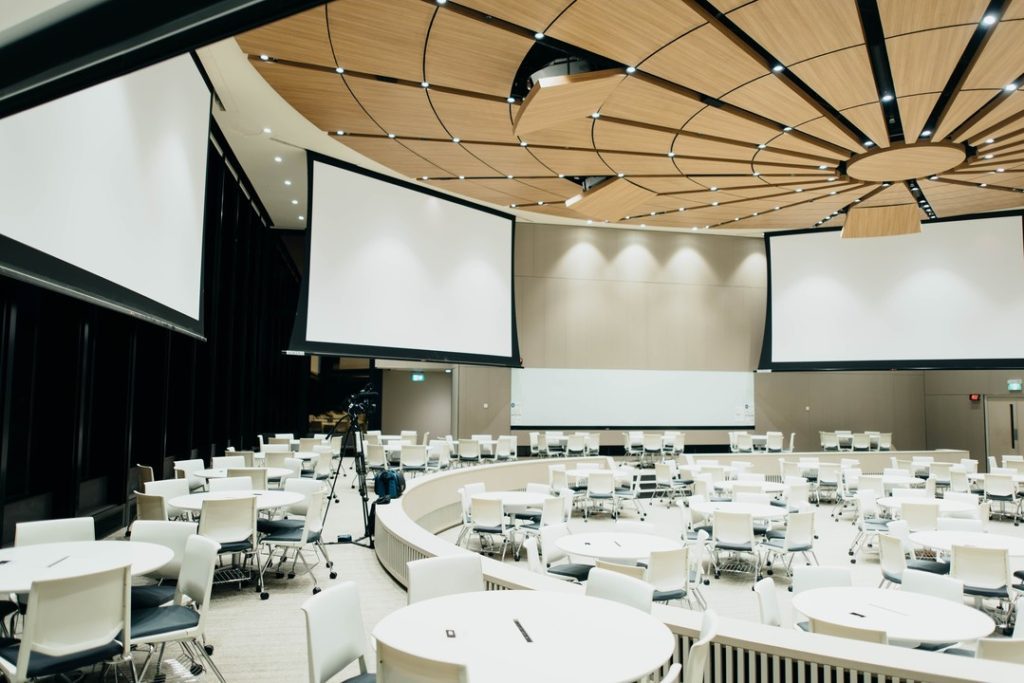It all starts with effective communication. A successful hybrid work environment requires more than just current AV technology. Today’s modern workplace also requires an underlying infrastructure and culture that supports the onsite and remote team members, while facilitating the connectivity required for today’s modern hybrid technology systems. A thriving, ever-connected workforce depends on whether – and how – AV and IT teams communicate. In the new world of the modern workplace, IT and AV must build interdependent, creative solutions that address the IT teams’ network & security concerns, while facilitating the AV technologies required by today’s modern meeting environments and users.
It’s important to make sure your AV partner is versed in communicating their needs with your IT teams while understanding the challenges AV Technology can bring to the IT world.
Having spent a couple of years building and perfecting remote work capabilities, it’s now time to assess what works and what needs improvement. You likely have existing AV Technology that will certainly need, at minimum an update, if not a complete overhaul, to ensure consistent, future-focused technologies for the workplace and for remote workers. One of your AV Partner’s first requests should be to speak with your IT Team and here’s why.
Today’s flexible work environments give hybrid teams a new way to work while changing the dynamic between AV and IT. In a connect-from-anywhere model, both your AV and IT teams are critical for maintaining the integrity of that constant connection. They must understand the ever-changing nuances of new technologies and work together to ensure that both IT and AV Systems are interoperable, while supporting the workplace initiatives today’s companies and executives expect for productivity.
It shouldn’t surprise anyone that AV and IT don’t always see eye-to-eye. While an IT team may be focused on overall network architecture, network bandwidth constraints, and security vulnerabilities and prevention. Modern AV design requires connecting multiple foreign AV devices to the network, requiring IT Information Security approval, potential VLan or switch configuration modifications, and additional port considerations.
In many companies, the AV-IT relationship was respectively siloed before the rise of hybrid and off-site work models and technology. Today and moving forward, the roles of these groups require consistent design coordination as a holistic technology department, making cross-functional communication critical for today’s demands and the always-connected future. AV engineers and technicians should develop a baseline knowledge of IT, while IT professionals should grow to understand their AV partner’s technology needs, in order to foster that communication and best serve the company’s initiatives.
Here are five ways that AV teams can connect with IT.
Find common ground. Your IT and AV teams have a common goal – a seamless user experience on a secure, robust network – even if they approach it from different angles. IT departments are wary of adding audio and video equipment to the company network – viewing these devices as potential security risks or vulnerabilities to an otherwise secure network. It’s up to the AV team to provide IT with the relevant documentation and potential devices for testing and certification, well in advance of any go-live dates put forth by the project or company leadership.
Listen first, then speak. AV teams stand a better chance of getting AV and IT on the same page if they understand the concerns that IT has and do what is possible to address these concerns in IT terms. So, AV teams must provide information regarding an AV device’s IP address requirements, bandwidth requirements, any applicable QoS requirements, and any AV devices that will be required to interact on the network.
Security is everyone’s job. The IT team needs to understand the AV team will not add hardware or software to a managed network that will compromise network security. That means AV teams must familiarize themselves with the company’s IT standards for network QoS while also designing to reduce any potential risk of network security breaches. These standards include best practices for network device authentication (IEEE 802.1x), data encryption (AES and TLS), and protected remote session logins (Secure Shell, or SSH).
Why put AV on the network? Using existing, standardized network infrastructure is a way to implement scalable, cost-efficient AV services. Networked AV also reduces long-term operational costs, while allowing for future-focused technologies to be added at a later date, should the required AV Technology change. An AV Partner should be prepared to explain these advantages in ways the IT department will be receptive and understanding.
AV-IT harmony will not happen overnight. But to jump-start the process, AV teams should open the lines of communication right away and be prepared to address any IT needs and concerns immediately.
IT and AV can coexist and even function in a thriving partnership that ultimately serves not only the company’s technology initiatives but serves each individual employee’s productivity and happiness. It simply takes a desire to understand each other’s concerns and working together to provide relevant, timely information and communication, that will ultimately build a stronger and more productive partnership for today and the future. We Got You.



